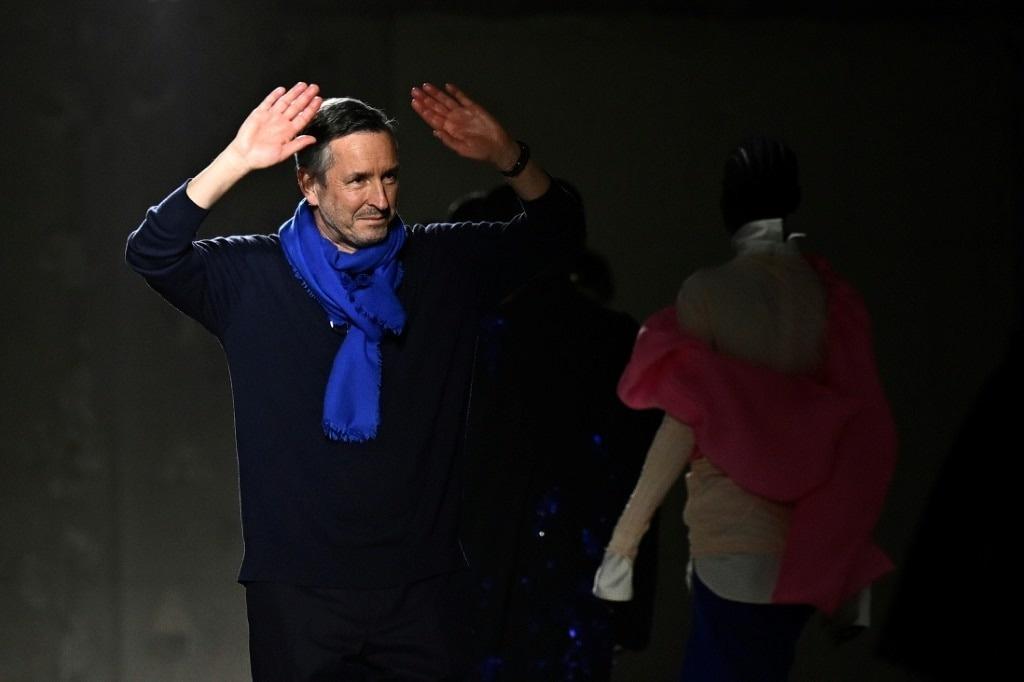When illustrious fashion designers exit their fashion careers
Belgian designers are masters in the art of departing from the fashion stage.

All power structures become weakest at transition points – and fashion brands are no exception. That’s why the favored approach by some brands in recent years has been a “gentle” transition from the founder to a successor.
Tom Ford did so with his assistant Peter Hawking, Carolina Herrera did the same in 2018 with Wes Gordon, Jean-Paul Gaultier also took similar action by creating a loop inviting different designers from 2020, and perhaps the softest transition belongs to Miuccia Prada, when she invited Raf Simons and facilitated his departure, thus ushering in a glorious era for the entire Prada group.
This seems to be happening with Michael Kors as well, according to sources from WWD. He discreetly began the search for a successor who could gradually replace him after selling his conglomerate, Capri Holding, to Tapestry Inc. for $8.5 billion last August. Thus, a $12 billion conglomerate was born, including Kate Spade, Coach, Stuart Weitzman, Jimmy Choo, and even Italy’s Versace – the latter two brands, according to WWD predictions, may be resold to recoup the amount spent.
This is also happening with Dries Van Noten, who announced yesterday his departure from the creative director position of his eponymous brand, while continuing to hold the role of chairman, and starting to search for a new creative director.
The news of Dries Van Noten stepping back from the spotlight is certainly saddening, but it reminds us of the message that Tom Ford once shared in his final interview with GQ upon his retirement.
He hinted at a limit to the number of years a fashion figure can build fame before becoming repetitive – a common occurrence in the fashion world. As in any other fashion conversation, the issue always revolves around the timeless story of “artistic integrity versus profit.”
An easily recognizable trend is emerging: Belgian designers are masters in the art of departing from the fashion stage. This is exemplified by Martin Margiela and Ann Demeulemeester, who handed over creative control in 2009 and 2013 respectively, focusing on their own projects.
Subsequently, An Vandevorst and Filip Arickx closed A.F. Vandervorst in 2020 after 22 years, saying, “motivation in the fashion world has changed. It is more difficult, uncertain, and messy than ever. We realized that we could not maintain the same level of creativity and focus on the story rather than the product, and work in a way that makes us different”, and arguing that “exclusivity and intimacy are no longer there”.
In 2022, Raf Simons, fully committed to Prada, also decided to close a long-standing legendary brand. Beyond the borders of Belgium but still in Mitteleuropa, three other legendary designers are famous for how they bid farewell to the runway: Thierry Mugler, who officially retired in 2002 due to economic downturn and creative stress; Jil Sander, who stepped away from the runway three times in 2000, 2003, and 2012.
Then there’s Helmut Lang, after a tumultuous business relationship with the Prada Group and developmental missteps, from minimalist style in the 1990s to the 2000s, he decided to bid farewell to the art world and give up fashion altogether.
It’s not hard to see that Belgian designers are leaving the stage at the height of their careers, while all others leave their brands after much commercial struggle or undergo difficult buyout and management processes. In conclusion, some leave voluntarily while others are ousted.
The difference seems to have become a culture: Tom Ford decided to retire after a serious family tragedy, and it is uncertain whether he would have retired without this sad event. Mugler returned to his brand as a “consultant”.
In summary, Belgian designers choose to preserve their legacy by encapsulating them in a period marked by intelligence and modesty. This is a stark contrast to the commercial pressures, about continuous growth that the fashion world tries to achieve in the era of market listing – perhaps built on self-esteem.

